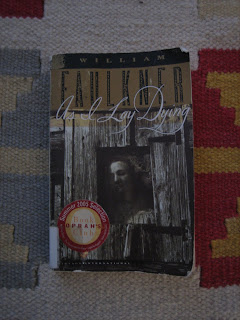
I am embarrassed to have not perviously read I Know Why the Caged Bird Sings by Maya Angelou. First published in 1969 and alternatively classified as autobiography or autobiographical fiction, it covers the early life of the poet and playwright Angelou. According to that well of unquestioned information, Wikipedia, not only does the book act as a critique, challenge and expansion of the autobiography genre, it was first written as a dare given by friend James Baldwin and editor Robert Loomis. A good thing they did, Caged Bird is an incredible read. Angelou, through her honest introspection and quiet writing, covers themes of identity, sexuality, rape, and racism carefully through the prism of her experience. So many books strive to cover similar ground and are the worst for it, resorting to "tell" when Angelou so deftly "shows."
With scenes of religious dissatisfaction, premarital sex, rape, unwed cohabitation, racism, and violence, it is little wonder that Caged Bird sits so prominently in the top of many challenged book lists; #3 of 100 most frequently challenged of 1990-2000, #5 of 100 of 2000-2007, and in the top ten of books banned from high and junior high school classrooms. What makes the book so powerful, and dangerous to those who think so, is the simple and personal way these themes are communicated to the reader. Rather than beat the reader over the head with the racism of American Slavery and subsequent Jim Crow, Angelou crafts the moment where, rebelling against her white employers re-naming her Mary and thus defining her identity, Marguerite smashes the china plates "from Virginia." Each note, each topic in the book is experienced, internalized, and expressed though the person of Marguerite. Doing so not only results in a character that leaps off of the page into the imagination of the living, but more poignantly expresses that the good and bad of the books themes, whether literacy or racism, are not academic or abstract ideas but enacted on the body and identity of real individuals.
To borrow from Opal Moore, the book "... Though easily read, [it] is no 'easy read.'" This unassuming presentation of difficult themes and vivid scenes seems to be a common mark for censors, especially when place on school curriculum. I'm confident that the Twilight series, if only because of its popularity and subject matter, will appear on the next list of challenged books, much in the same way the Harry Potter series did before. I shy away from claiming some books are worse to ban than others, but the attempt to control what students learn about and think is especially grim.
Up next: Go Ask Alice by Anonymous



 "Once upon a time there was an English lady in India, where black children abound and tigers are everyday affairs, who had two little girls. To amuse these little girls she used now and then to invent stories..."
"Once upon a time there was an English lady in India, where black children abound and tigers are everyday affairs, who had two little girls. To amuse these little girls she used now and then to invent stories..."
